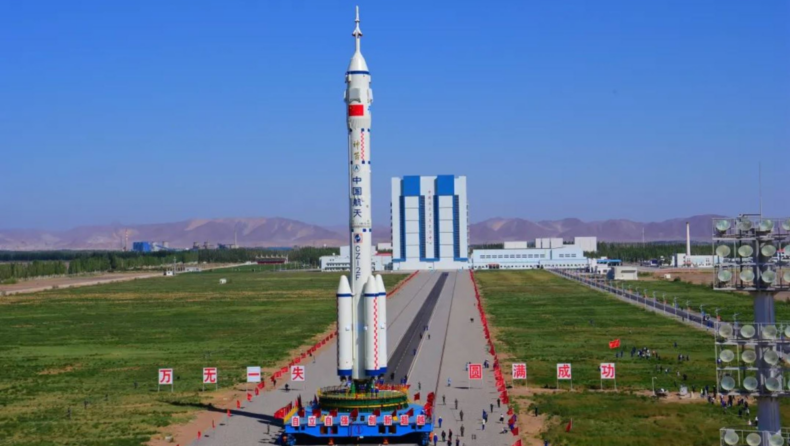On 5 June, at 10.44 pm ET, China launched Shenzhou-14 from the Jiuquan launch centre in Gobi Desert. A Long March-2F rocket carried the spacecraft manned by 3 astronauts.
The Shenzhou-14 is the third crewed mission and seventh out of the eleven missions, planned for the completion of China’s Tiangong space station.
CMSA plans to send three more astronauts at the end of the Shenzhou-14 mission to reside with the crew for five to ten days. This will bring the total number of Chinese astronauts in orbit to a record six.
The current crew will return to Earth in December 2022. For six months, they would be working on the core of the Tiangong space station. The Shenzhou-14 crew would assist in docking, setup, and testing of the two laboratory modules.
According to the CMSA, the crew will assemble the modules and the Tianhe core cabin (the astronaut’s main living space). Modules will be joined into a T-shaped structure, together with the Tianhe core cabin, which will be extended from 50 cubic metres to 110 cubic metres. The Chinese astronaut trio would also perform two to three spacewalks.
Meet the crew

Image Source – CGTN
At a press conference on 4 June, the China Manned Space Agency (CMSA) announced the names of the crew members – Chen Dong, Liu Yang and Cai Xuzhe.
Chen, 43, will be the commander of Shenzhou-14. He is a veteran of the Shenzhou 11 mission since 2016. This is his second mission in space, but his first mission as a commander.
43 years old Liu was China’s first woman in space in 2012 and this is her second flight. Her first space mission was Shenzhou 9.
Cai, 46, is the third astronaut and is making his first trip to orbit.
Tiangong Space Station
The Tiangong space station is one of the most ambitious space projects of China. CMSA expects Tiangong, meaning “heavenly”, to be fully operational by the end of 2022. It is a low-Earth-orbiting space station.
The authorities in the Republic country intend the Tiangong space station to last for 15 years. CMSA wants to retain three astronauts on Tiangong for at least a decade, send two crewed missions and two cargo missions to the station per year. Through the space station, China hopes to host many experiments for itself and other countries.
China launched Tianhe, the first of three modules for the orbiting space station, in May 2021. Tianhe is 54-foot-long (16.6-meter) core module, which was launched in April 2021. The modules, Wentian (“Quest for the Heavens”) and Mengtian (“Dreaming of the Heavens”), are scheduled to launch in July and October of the present year.
Six astronauts from the Shenzhou 12 and Shenzhou 13 teams have visited the space station thus far.













